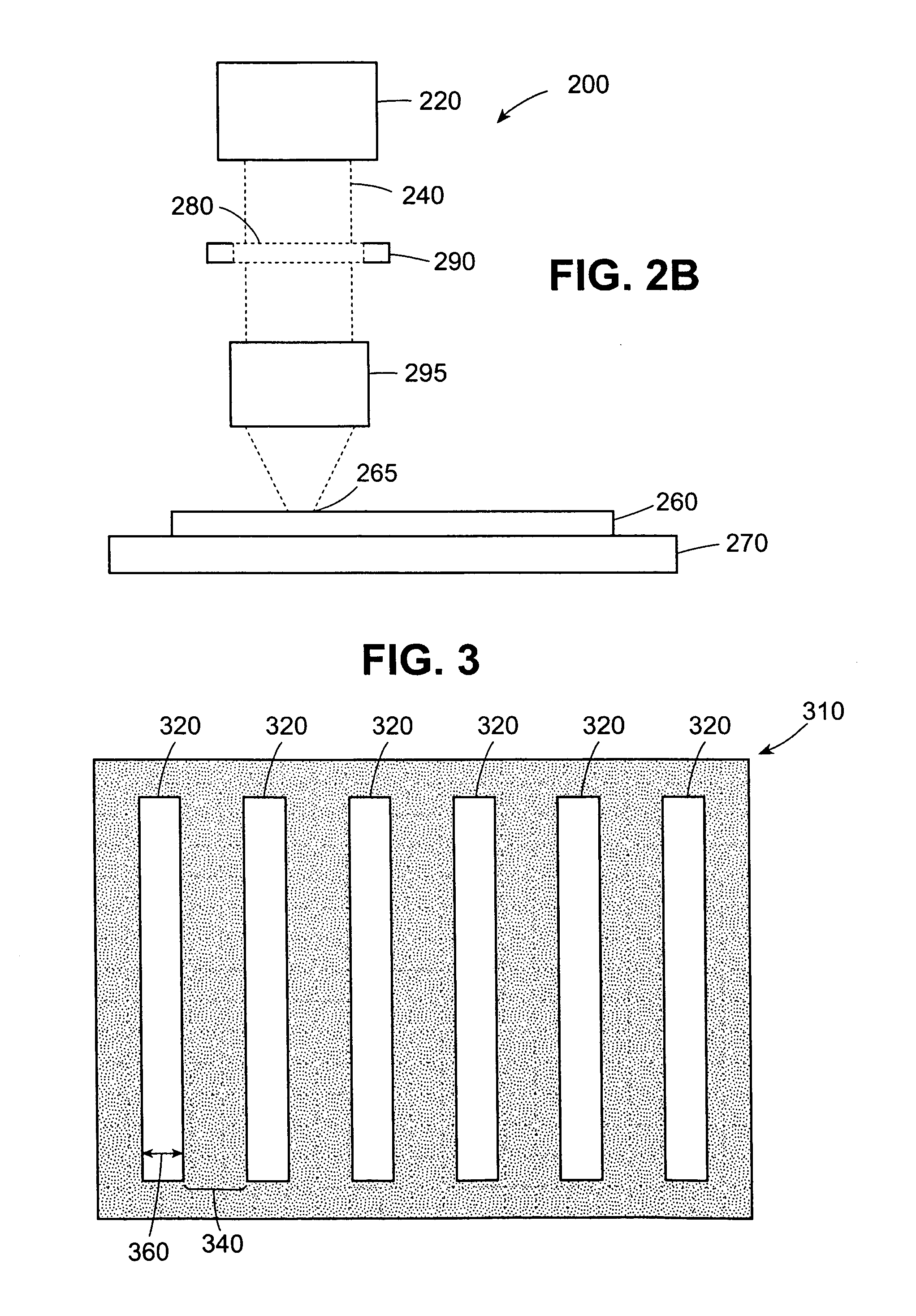Laser-irradiated thin films having variable thickness
a technology of variable thickness and laser irradiation, which is applied in the direction of crystal growth process, chemistry apparatus and processes, manufacturing tools, etc., can solve the problems of inefficiency and uneconomical processing of the entire film surface, and the inability to meet the high mobility requirements of the integration region,
- Summary
- Abstract
- Description
- Claims
- Application Information
AI Technical Summary
Benefits of technology
Problems solved by technology
Method used
Image
Examples
Embodiment Construction
[0027]The quality of a film that has been crystallized using a laser-induced crystallization growth technique depends, in part, on the thickness of the processed film. This observation is used to crystallize different regions of the film in an energy- and time-efficient manner and to provide a desired film characteristic. Laser-induced crystallization is typically accomplished by laser irradiation using a wavelength of energy that can be absorbed by the film. The laser source may be any conventional laser source, including but not limited to, excimer laser, continuous wave laser and solid-state laser. The irradiation beam pulse can be generated by other known sources for short energy pulses suitable for melting a semiconductor or metallic material. Such known sources can be a pulsed solid state laser, a chopped continuous wave laser, a pulsed electron beam and a pulsed ion beam, and the like.
[0028]Films of different thicknesses, although similarly processed, have different film prop...
PUM
| Property | Measurement | Unit |
|---|---|---|
| thickness | aaaaa | aaaaa |
| thickness | aaaaa | aaaaa |
| length | aaaaa | aaaaa |
Abstract
Description
Claims
Application Information
 Login to View More
Login to View More - R&D
- Intellectual Property
- Life Sciences
- Materials
- Tech Scout
- Unparalleled Data Quality
- Higher Quality Content
- 60% Fewer Hallucinations
Browse by: Latest US Patents, China's latest patents, Technical Efficacy Thesaurus, Application Domain, Technology Topic, Popular Technical Reports.
© 2025 PatSnap. All rights reserved.Legal|Privacy policy|Modern Slavery Act Transparency Statement|Sitemap|About US| Contact US: help@patsnap.com



